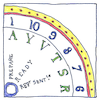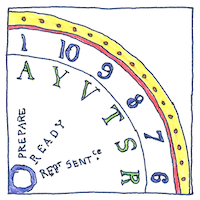Francis Ronalds
electromagnetism

|
Electrical telegraph
Many people realized electricity could be used to communicate over distances. People tried using a wire for each letter and digit and detecting a charge on the other end of the wires using pith balls or bubbles produced in tubes of acid. Francis Ronalds made the first working telegraph using pulses of static electricity on a single wire to turn a dial marked with the letters and digits and standard phrases: 1 2 3 4 5 6 7 9 10 A B C D E F G H I K L M N O P R S T V Y PREPARE READY REPT SENTCE REPT WORD FINISHED ANNUL SENTCE ANNUL WORD NOTE FIGURES NOTE LETTERS DICTIONARY.
Other electrical telegraphs
In 1833, Carl Friedrich Gauss and Wilhelm Weber put up a wire running nearly three-quarters of a mile and communicated with a positive or negative charge detected by a galvanometer on the distant end. They generated a positive or negative electric pulse by moving an induction coil over a permanent magnet, and they developed a binary code for the alphabet, eventually obtaining a transmission rate of seven letters per minute. Two years later, David Alter in Elderton Pennsylvania invented and demonstrated his own telegraph but he didn’t develop it for actual service. In 1836, Samuel Morse and Alfred Vail developed and patented Morse code and a recording electric telegraph. Meanwhile, William Fothergill Cooke and Charles Wheatstone were working on a system that didn’t transmit codes, but completed a circuit across two of six wires to cause needles to point to a letter on a triangular grid. A Cooke and Wheatstone six-wire system installed in 1838 on thirteen miles of the Great Western Railway between Paddington station and West Drayton was the first commercial telegraph.
Marital telegraph
First Spouse. “I’m taking the garbage out.” [subtext] I’m trying to be a responsible adult. Second Spouse. “What?” [subtext] Why bother me with that? First Spouse. [Points to the trash bin; then points to the door.] Second Spouse. “OK.” [subtext] Thank you.



Much has been written about the importance of the telegraph in the United States. And today ham radio operators continue the tradition of communicating in Morse code.
See also in The book of science:
Readings in wikipedia: